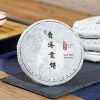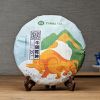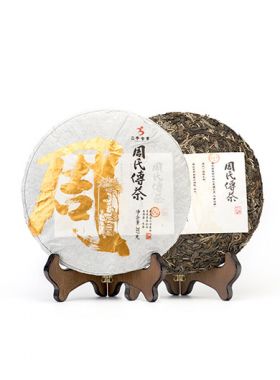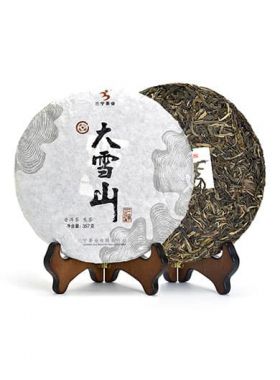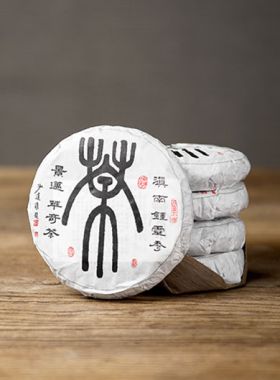-
Fast ShippingFree shipping for orders above $40
to most countries. -
Secure PaymentPay with Paypal, Credit Card …
-
Carefully SelectedFrequently Visit Tea Gardens.
Taste Repetitiously -
15 Days RefundNo Questions Asked
Refund Policy
Award Winning Guo Gan Gushu Ancient Wild Tree Raw Puerh Loose Tea 2020
Refreshing and sweet, good for aging
Refreshing and sweet, good for aging
| Origin: |
Yunnan |
|---|---|
| Season: |
Spring Tea |
| Plucking Standard: |
One bud with one or two leaves |
| Harvest Time: |
March 25, 2020 |
| Dry Leaf: |
Grey brown long strips, plump buds and leaves with obvious pekoe on surface |
| Aroma: |
Fresh aroma of the dry leaves; the tea liquid has a honey fragrance and a special wild charm |
| Liquor: |
Bright and clean yellow |
| Taste: |
Refreshing, the first few steeps have the bitter and astringent taste of new raw puerh tea; after the 10 steep, it begins to become sweet and promoting the secretion of saliva |
| Tea Bush: |
Yunnan large-leaf tea bush species (100-300 years old Gushu) |
| Tea Garden: |
Gong Zhang Ancient Tea Area (altitude of 1580 meters) |
| Caffeine: |
Low caffeine (less than 20% of a cup of coffee) |
| Storage: |
Store in cool, dry place away from sunlight; keep ventilated |
| Shelf Life: |
The aged the better |
Angel's Comment:
Our first loose leaf raw pu-erh tea, you can see the original shape of Guo Gan pu-erh before pressing them into cake.
Award Winning Tea
As one of the world’s largest and most trusted food and drink awards, the Great Taste, organized by the Guild of Fine Food, has been described as the food-world equivalent of the Oscars and the “epicurean equivalent of the Booker prize”. Teavivre is honored to be a part of this prestigious competition and we are ecstatic to announce that our Guo Gan Gushu Ancient Wild Tree Raw Puerh has won 1 Star at the 2023 Great Taste Awards.
The judges’ overall comment on this tea:“ A very beautiful cake. A relatively youthful example, not overly leathery. There is a hint of smokiness on the liquor brewed to instruction, a green tea delicacy while relaying light Pu-Erh character - we haven't done 10 steeps, and it's difficult to anticipate how it will age, but this would be a great introduction to Pu-erh for anyone who has not encountered it before, delicate while highly individual.”
This Guo Gan Gushu Ancient Wild Tree Raw Puerh Loose Tea is harvested before Ching Ming Festival in 2020. Compared with our Guo Gan Raw Puerh Cake Tea 2019, its leaves are tender, tastes fresher and is more infusion-enduring. Since it is a loose leaf tea, we need be very careful when brewing; the first five steeps need short infusion, otherwise the bitter and astringency will cover its aroma and sweetness. While at the six and seven steep, we can increase the brewing time appropriately, the taste of the liquid is still rich with sweet aftertaste and promoting the secretion of saliva; in the next few steeps, the tea liquid not only becomes sweet, but also has a unique wild charm.
 |
Cup Method |
 |
Chinese Gongfu Method |
 |
Teacup: 12oz / 355ml |  |
Gaiwan: 3.8oz / 110ml |
 |
203℉ / 95℃ |  |
203℉ / 95℃ |
 |
5g Tea |  |
7g Tea |
 |
Brewing time: 2 - 3 mins |  |
16 steeps: rinse, 5s, 5s, 5s, 5s, 5s, 10s, 15s, 20s, 25s, 30s, 40s, 50s, 70s, 90s, 110s, 150s |
| Rinse time is around 5 seconds |
The Guogan Region is one of the world's tea sources. It is rich in natural resources of hundreds year’s age of ancient tea trees of Yunnan large-leaf species and is high-quality raw materials for high-end Pu'er tea. In addition to the advantage of tea tree resources, another absolute core advantage that cannot be surpassed is the pure original ecologic environment here.
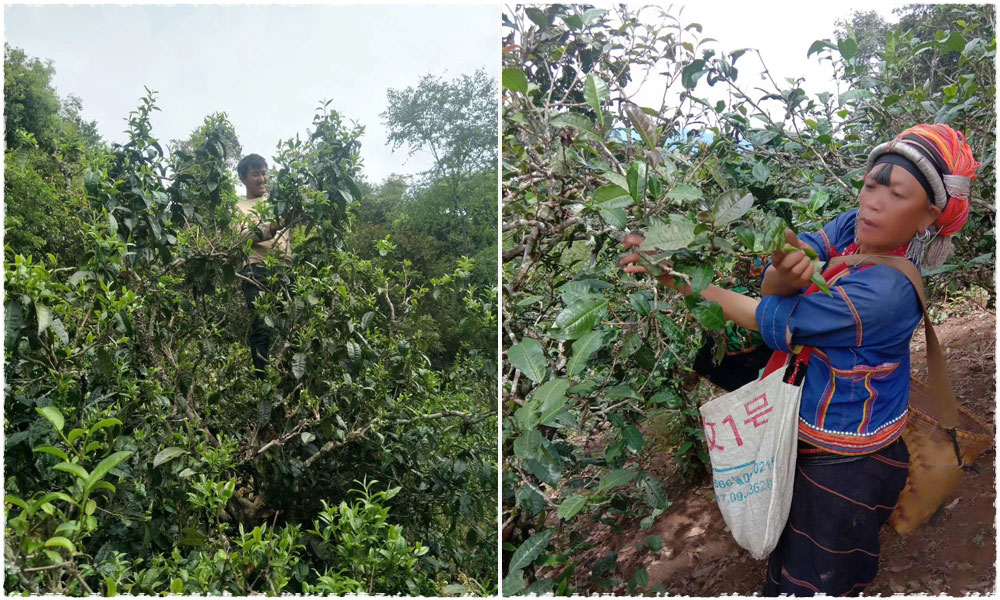
The Gong Zhang tea area is the region with the most production of Guogan tea. Because the traffic occlusion in the area that tea tree is completely grown in the original forest, the tea tree is almost in the wild state of unattended and cultivated for more than 80 years. There is no use of any chemical fertilizers and pesticides, thus making it 100% of natural tea raw material origin. Many people have said that they can fell the true nature when drinking GuoGan tea.
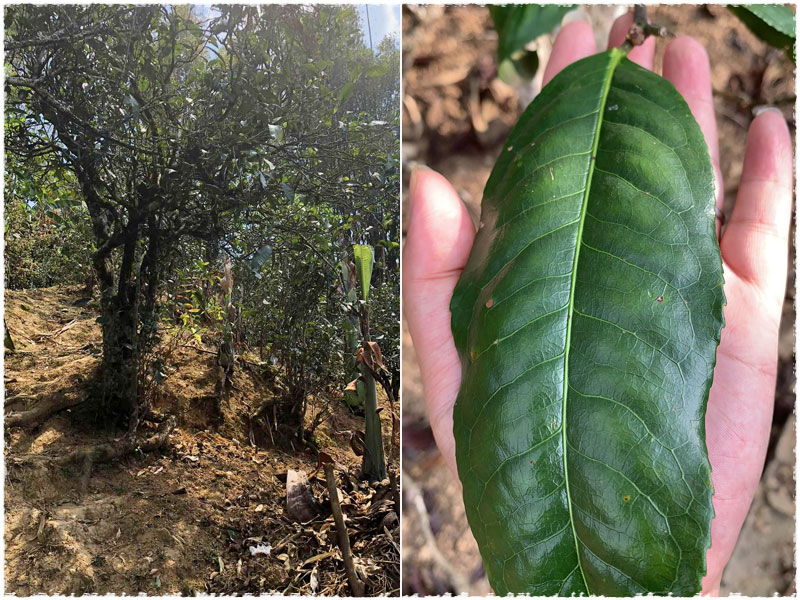
Growing in forest, the Tea buds and leaves of Guo Gan ancient tea are bigger and fatter that ancient tea in other tea area.
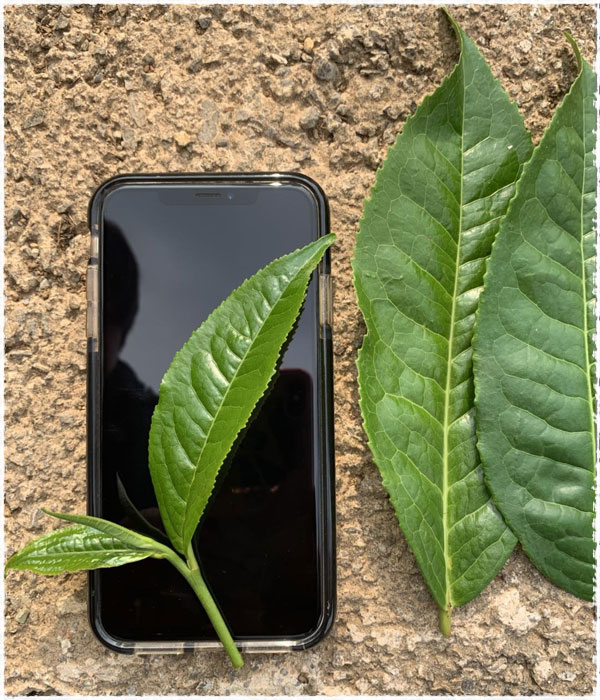
This puerh cake is made of the raw material one bud with one or two leaves as shown on the photo.
Guo Gan is mostly mountainous and hilly and is mainly composed of three large “dams”, with the most famous one “Masuba”. The terrain of Guo Gan is between 450 – 2400 meters in elevation, with an average of 1216 meters. Guo Gan belongs to typical low-latitude and high-altitude plateau humid monsoon climate zone. It has plenty kinds of plant species and still retains its original ecological environment. In addition, the situation of surrounded by three sides of rivers made it accumulated a large amount of camellia plant in this area. Together with the wild arbor trees in the original growth ecological environment, it has become the most superior ecological material of Pu’er Tea.
There is a famous Bangma Daxue Mountain in Mengku, Lincang, Yunnan. The mountain peaks are covered with snow and clouds all the year round. Ancient tea trees of Yunnan large leaves spread throughout the original forests in the mountain. On the hillside of the northern section of the Bangma Mountain Range, there is an ancient Yi village called "Bing Dao", the proverb "Biandao", which means the place where the bamboo fence is used as the gate. At the other end of this Bangma Daxue Mountain, it has already crossed the border, which is the Guo Gan ancient tea tree area. Guo Gan and Bing Dao are respectively on two sides of the Bangma Daxue Mountain. They have almost the same high-quality soil and ecological environment, so the ancient teas of the two places are as the same fragrant.
The origin tea tree species in Guo Gan belongs to Subtropical large-leaf species, which is Yunnan large-leaf tea bush species. According to the local historical records, Guo Gan and Mengku, Yunnan belong to the same tea source region. The leaves from this type are abundant in polyphenols, catechins, amino acids, and caffeine.
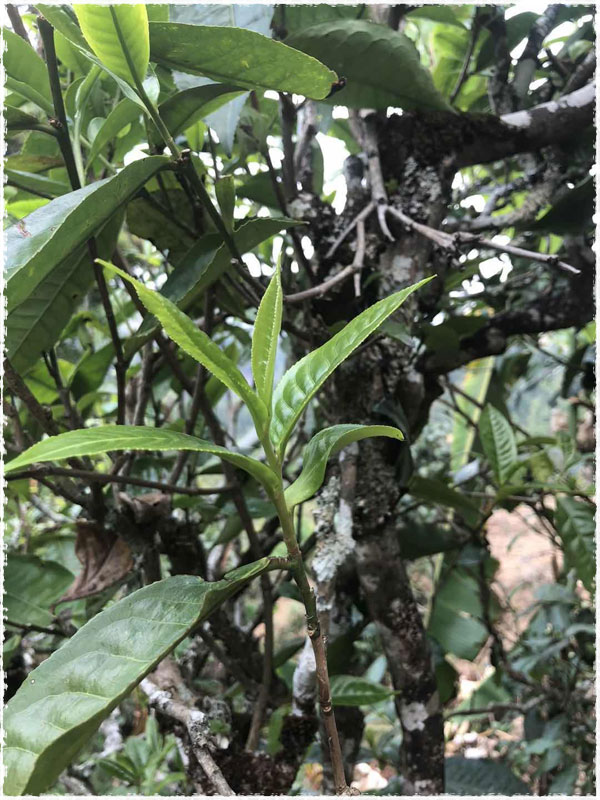
Pu-erh tea is one of the oldest types of Chinese tea, with a history stretching back over 1,700 years to the Eastern Han Dynasty, when the tea was called Jing Cha. It is named after the town of Pu’er in Yunnan province, which was the earliest trading center for this tea. In its early history pu-erh was used as a bartering currency throughout southwest China, and there the famed Cha Ma Gu Dao - or Tea Horse Road - was built especially to transport this tea through the Himalayas to other countries and areas in Tibet.
-
5 stars10
-
4 stars4
-
3 stars0
-
2 stars0
-
1 star0



